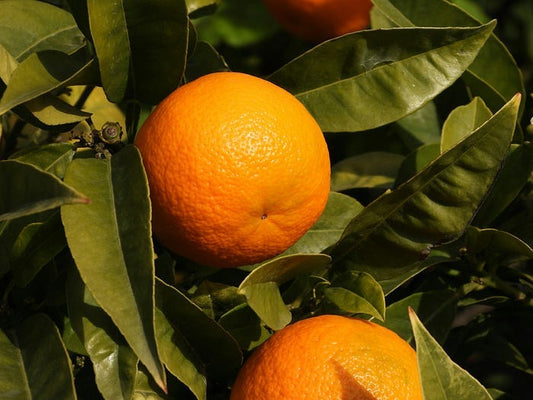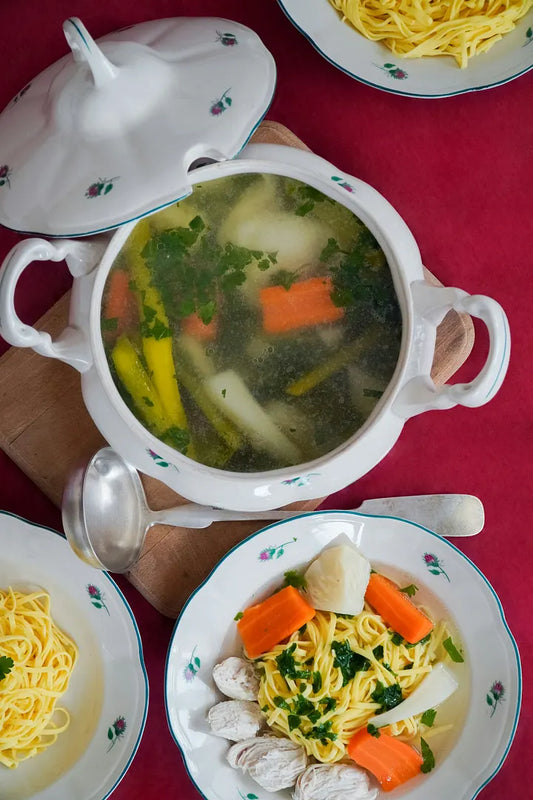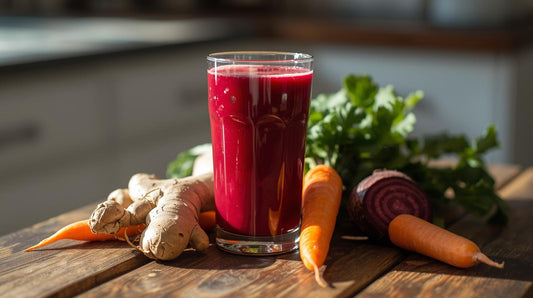
Why Anaemia in CKD: A Renal Dietitian’s Evidence-Based Perspective
Oksana RozponczykShare
As a dietitian working daily with nephrology patients, I’ve seen first-hand how anemia complicates chronic kidney disease (CKD). Let’s break down the why behind this common complication, grounded in medical research, and explore how we can address it.
Photo by Marina Helena Muller on Unsplash
The Root Causes of Anemia in CKD
Erythropoietin (EPO) Deficiency
- Healthy kidneys produce EPO (Erythropoietin), a hormone that signals bone marrow to make red blood cells (RBCs). In CKD, damaged kidneys produce less EPO, leading to fewer RBCs and oxygen deprivation in tissues.
- Key Fact: Over 90% of dialysis-dependent patients develop anemia due to severe EPO deficiency [3].
Iron Deficiency
-
Absolute Deficiency: Caused by poor dietary intake, blood loss (e.g., dialysis, frequent lab tests), or impaired gut iron absorption due to uraemia [16].
- Functional Deficiency: Chronic inflammation in CKD raises hepcidin, a hormone that traps iron in cells, making it unavailable for RBC production [10,11].
Explanations:
IL-6 → Blocks Iron from Being Used
-
IL-6 (an inflammatory signal) tells the liver to make hepcidin.
- Hepcidin acts like a “lock” on iron stores — it traps iron in your cells so your body can’t use it to make new red blood cells. Result: You have enough iron, but it’s stuck!
IL-6 → Kills Red Blood Cells Faster
- IL-6 also creates oxidative stress, damaging red blood cells and causing them to die early.
Why This Matters in CKD:
Inflammation (common in kidney disease) creates a double problem:
- Your body can’t use the iron it has.
- Your red blood cells don’t last as long.
→ This makes anemia worse and harder to fix with just iron supplements.
Example: Imagine your iron is fuel, but the tank is locked (hepcidin). Even if you add more fuel (iron-rich foods/supplements), the engine (bone marrow) can’t use it!
Chronic Inflammation
- Inflammation from CKD or comorbidities (e.g., diabetes) suppresses erythropoiesis and EPO responsiveness. Pro-inflammatory cytokines like IL-6 disrupt iron metabolism and shorten RBC lifespan [3,10].
Other Contributors
-
Uremic Toxins: Accumulate in advanced CKD, directly inhibiting bone marrow function [3].
- Nutritional Deficiencies: Low B12, folate, or copper (lost during dialysis) further impair RBC synthesis [10].
 Photo by Hermes Rivera on Unsplash
Photo by Hermes Rivera on Unsplash
Why This Matters for CKD Patients
Anemia isn’t just about fatigue — it’s linked to:
-
Cardiovascular strain: The heart works harder to compensate for low oxygen, raising risks of heart failure and arrhythmias [14].
-
Accelerated CKD progression: Poorly managed anemia correlates with faster kidney function decline [11].
- Reduced quality of life: Brain fog, weakness, and shortness of breath limit daily activities and mental health [6].
The Role of Diet in Managing Anemia
While medical treatments are essential, nutrition plays a pivotal role:
Iron-Rich Foods
-
Heme iron (better absorbed): Lean meats, poultry, fish.
-
Non-heme iron: Lentils, spinach, fortified cereals. Pair with vitamin C (e.g., bell peppers, citrus) to boost absorption [6].
- Caution: CKD patients often need to limit phosphorus and potassium — work with a dietitian to balance these needs.
Addressing Inflammation
- Anti-inflammatory diets (e.g., Mediterranean-style) rich in omega-3s (fatty fish, flaxseeds) and antioxidants (berries, leafy greens) may reduce hepcidin levels [10].
Monitoring and Supplementation
- Oral or IV iron is often required, especially in dialysis patients who lose ~161 mg iron/year [3].
- Vitamin D and B12 status should be checked regularly, as deficiencies worsen anemia [10].
Current and Emerging Treatments
Erythropoiesis-Stimulating Agents (ESAs)
- Injectables like epoetin alfa stimulate RBC production but require careful dosing to avoid cardiovascular risks [2,11].
HIF Prolyl Hydroxylase Inhibitors (HIF-PHIs)
- New oral drugs (e.g., roxadustat) stabilize HIF, boosting EPO production and improving iron utilization. These are promising for patients resistant to ESAs [10,11].
Individualised Care
- Regular blood tests (ferritin, transferrin saturation) guide iron therapy. KDIGO guidelines recommend hemoglobin targets of 10–12 g/dL to balance risks and benefits [4,10].
Key Takeaways for Patients
-
Get tested: Annual hemoglobin checks for early-stage CKD; twice-yearly for advanced CKD [4].
-
Collaborate with your team: Nephrologists, dietitians, and nurses tailor treatments to your unique needs.
- Advocate for nutrition: Small dietary tweaks can amplify the effects of medical therapies.
Anemia in CKD is multifactorial, but with the right strategies, we can improve your energy, protect your heart, and slow CKD progression. Let’s tackle this together!
"Health is the greatest human value"
AnaskoMed, Your Dietitian & Nutritionist
References
-
EPO Deficiency in CKD
Babitt JL, Lin HY. Mechanisms of Anemia in CKD. J Am Soc Nephrol. 2012;23(10):1631–1634. doi:10.1681/ASN.2011111078. PMID: 22935483.
-
Iron Deficiency in CKD
Ganz T. Iron Deficiency of Chronic Disease. N Engl J Med. 2020;383(11):1016–1027. doi:10.1056/NEJMra1910966. PMID: 32905677.
-
Hepcidin & Inflammation
Nemeth E, et al. Hepcidin Regulates Cellular Iron Efflux by Binding to Ferroportin. Science. 2004;306(5704):2090–2093. doi:10.1126/science.1104742. PMID: 15514116.
-
Uremic Toxins
Vanholder R, et al. Uremic Toxins and Cardiovascular Disease. Nat Rev Nephrol. 2022;18(7):457–468. doi:10.1038/s41581–022–00570–3. PMID: 35352033.
-
Nutritional Deficiencies
KDOQI Clinical Practice Guideline for Nutrition in CKD. Am J Kidney Dis. 2020;76(3 Suppl 1):S1-S107. doi:10.1053/j.ajkd.2020.05.006. PMID: 32829751.
-
Cardiovascular Risks
Pfeffer MA, et al. A Trial of Darbepoetin Alfa in Type 2 Diabetes and CKD. N Engl J Med. 2009;361(21):2019–2032. doi:10.1056/NEJMoa0907845. PMID: 19880844.
-
CKD Progression
Portolés J, et al. Anemia and Mortality in CKD. Clin J Am Soc Nephrol. 2021;16(12):1820–1829. doi:10.2215/CJN.04080321. PMID: 34716208.
-
Quality of Life
Finkelstein FO, et al. Health-Related Quality of Life in CKD Anemia. Kidney Int. 2019;95(4):726–735. doi:10.1016/j.kint.2018.11.025. PMID: 30773270.
-
Vitamin C & Iron Absorption
Hunt JR, et al. Ascorbic Acid Enhances Iron Absorption. Am J Clin Nutr. 1994;60(1):142–145. doi:10.1093/ajcn/60.1.142. PMID: 8017334.
-
Anti-Inflammatory Diets
Ko GJ, et al. Dietary Interventions in CKD. J Ren Nutr. 2020;30(5):375–384. doi:10.1053/j.jrn.2020.01.019. PMID: 32220538.
-
Iron Loss in Dialysis
Macdougall IC, et al. Iron Management in CKD. Nephrol Dial Transplant. 2019;34(6):914–921. doi:10.1093/ndt/gfy356. PMID: 30535242.
-
Vitamin D/B12 & Anemia
Patel NM, et al. Vitamin D Deficiency and Anemia in CKD. Clin J Am Soc Nephrol. 2016;11(4):693–701. doi:10.2215/CJN.09240915. PMID: 26880747.
-
ESA Risks
Singh AK, et al. CHOIR Investigators. Correction of Anemia with Epoetin Alfa in CKD. N Engl J Med. 2006;355(20):2085–2098. doi:10.1056/NEJMoa065485. PMID: 17108343.
-
HIF-PHIs (Roxadustat)
Chen N, et al. Roxadustat for Anemia in CKD. N Engl J Med. 2019;381(11):1011–1022. doi:10.1056/NEJMoa1901713. PMID: 31167050.
-
KDIGO Guidelines
Kidney Disease: Improving Global Outcomes (KDIGO) Anemia Work Group. KDIGO Clinical Practice Guideline for Anemia in CKD. Kidney Int Suppl. 2012;2(4):279–335. doi:10.1038/kisup.2012.37.




